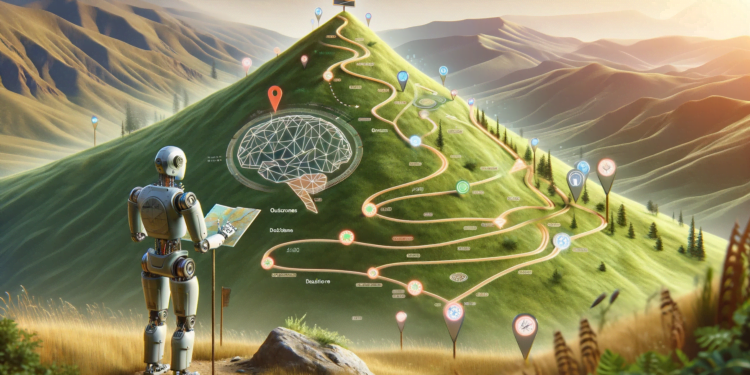The Hill Climbing (HC) algorithm stands as a fundamental meta-heuristic within the tangled web of intelligent optimization techniques, dedicated to exploring the solution landscape in a relentless local ascent search. Inspired by the analogy of a mountaineer striving to reach the nearest peak, HC is conceptualized as an iterative approach that starts with an arbitrary solution to a problem and makes incremental modifications in the hopes of improving the current state.
Digging into the Algorithmic Strategy
At the algorithmic level, HC proposes a simplification of the optimization problem where, in each iteration, a neighbor of the current state is selected based on a predefined evaluation or “fitness” function. The selection paradigm is meticulously chosen to ensure that the transition is toward a better or, at least, equally favorable state, according to the acceptance strategy.
It’s crucial to note that there are various variants of the traditional HC, such as the Steepest-Ascent HC and the Stochastic HC, both encompassing different strategies for the selection of neighbors. While the former compares all immediate neighbors before making a decision, the latter incorporates a randomness component that allows for an escape from suboptimal local minima.
Understanding Local and Global Minima
A central piece in the study of HC is the distinction between local minima and the global minimum. The former represents an optimal solution within a specific neighborhood of the solution space, while the global minimum is the absolute optimum within the entire search space. An inherent limitation of HC is its predisposition towards these local minima due to the lack of mechanisms to differentiate between them.
Technical Advances and Escape Strategies
To combat the pitfalls of local minima, extensive techniques have been developed that form part of the advanced set of HC algorithms. Simulated Annealing emerges as a sophisticated extension of HC, which incorporates elements of statistical thermodynamics to allow for the exploration of suboptimal solutions with the intention of eventually reaching the global optimum.
Among other evolutions of HC, we find Tabu Search, which includes a memory of past states as a mechanism to avoid unproductive cycles, and the Genetic Algorithm, which mimics the natural selection process to steer the search space towards promising regions.
Practical Applications and Case Studies
In terms of practical applications, HC has proven to be instrumental in areas as diverse as route planning, neural network design, and bioinformatics. A tangible example is its utilization in optimizing delivery vehicle routes, where HC contributes not just to the minimization of operational costs but also to significant time savings.
Another application is found in the tuning of hyperparameters in machine learning processes, where HC has been used to refine models for improved predictive accuracy. The search for optimal parameters in deep neural networks demonstrates HC’s capability to navigate high-dimensional spaces, despite its theoretical limitations.
Projecting Towards Future Innovative Directions
Looking towards the horizon of innovation, there is a growing interest in the hybridization of HC with collective intelligence methods such as Particle Swarm Optimization and Ant Colony Optimization. This approach promotes combining the local robustness of HC with the collective-guided exploration of other algorithms, pointing towards a renaissance of the classic method in the form of hybrid solutions.
Conclusion and Final Thoughts
In conclusion, Hill Climbing remains a cornerstone in optimization that, despite constraints such as the attraction to local minima, has sown a legacy of variants and applications that transcend its initial conceptualization. Future research should focus on expanding its exploratory capabilities and synergizing with other artificial intelligence strategies to cement its relevance at the forefront of technological innovation.
This analysis aligns with the community of experts who envision HC as a potentially transformative tool, provided that its evolution continues to assimilate contemporary advancements and re-potentiates itself in this increasingly dynamic and demanding AI landscape. The challenge lies in transcending its inherent confines and continuing to contribute to the corpus of knowledge in the quest for optimal solutions in ever more complex and multifaceted domains.






















